A few years ago, I did a single play of the game Federation, designed by Dimitri Perrier (The Specialists) and Matthieu Verdier (In the Footsteps of Darwin). For a stretch, it was one of the hot medium-plus strategy games making the rounds during the 2022 convention season, and I wanted to find out about the hype.
That first play, with friends in Chicago, was interesting. I loved certain elements of the design but was surprised at the pedestrian nature of other parts, particularly the very dry tracks that were located on different parts of the board. The first play was a net positive—I was intrigued by a second play, but never made the effort to get the game back to the table.
An expansion for the base game is coming soon, so in advance of that, I wanted to get the original game back to the table. For this review, I did a mix of in-person plays as well as three plays of the game on Board Game Arena, where a great app for the game resides. I came away from these plays with some…thoughts.
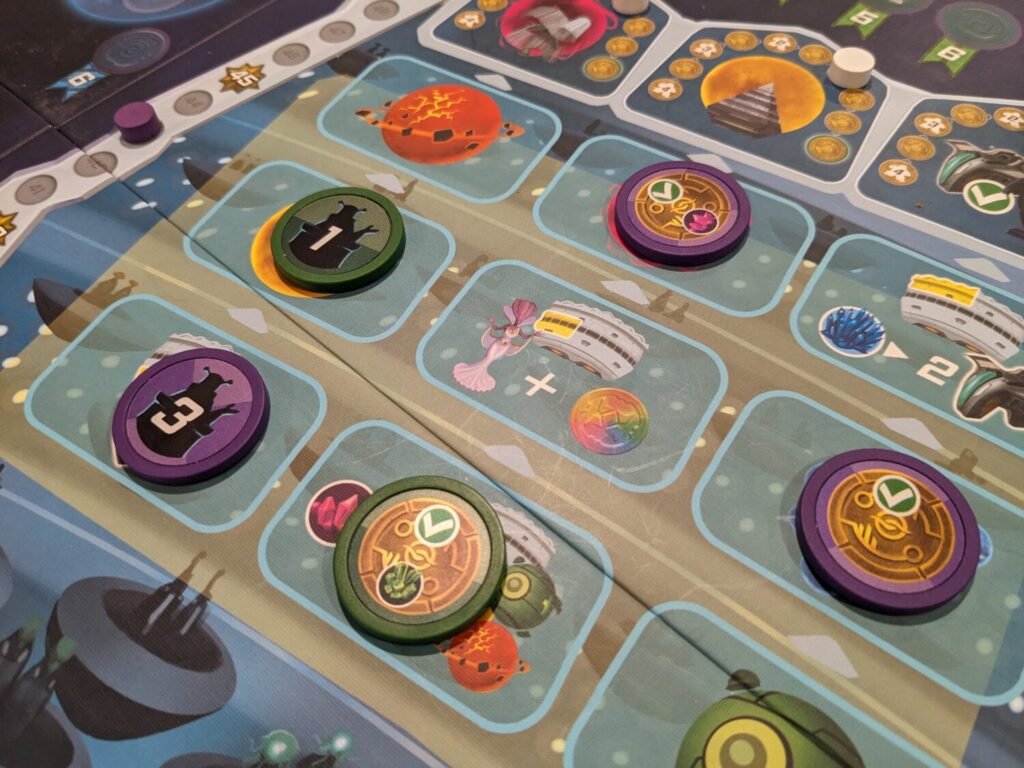
Everyone Can Appreciate This Government
Federation is an area control and action selection game for 2-4 players. Over the course of five rounds, with four turns per round, players use double-sided tokens to determine whether they will take their main action by seeding an action selection board with a vote for the current round’s scoring goal, or use their token to unlock special missions on their personal player board before boosting the potential for certain end-of-game scoring conditions to trigger instead.
That action selection area is known as he Senate, and both during that first play and in recent experiences, this is the part of the design I enjoy most. In this space, players have interesting choices on every turn. That starts with deciding if they want to use their tokens, known as Ambassador tokens, on their Funding side or on their Voting side.
According to the stats on BGA, the winner in games of Federation uses their tokens as Funding tokens 62% of the time, so let’s start there. Using an Ambassador on its Funding side triggers two different areas. First, it moves the dial for a “Major Project” at the top of that action’s column forward one space to the right. If, by the end of the game, that gauge reaches the end of its funding track, then each player will score points based on their level of influence towards that particular Major Project. So, if the Major Project’s funding reaches its end space for Arratooine (also known in my circles as “the yellow planet”), then players who have gone up the tracks or dropped markers on Arratooine will score points based on a scoring matrix tied to player count. Whoever influenced the most Arratooine spaces will get 10-16 points.
There are six columns in the Senate area, so picking actions that help boost chances to score will certainly become important. But there are 18 total action spaces, and it’s important to try to score points in as many different areas as you can. Also, it’s become clear that using the Funding side of tokens to unlock the ability to take those same actions later is huge. Mixed with a healthy supply of spaceship tokens—used for the bonus action portion of a turn—the savviest of Federation players will use their tokens to do Funding actions on almost every turn.
(Writing this article made me curious, so I checked the stats for the current top-ranked Federation player on BGA, a user named rlturner. That player uses Funding action 83% of the time, so clearly, targeting 75% or more of my actions for Funding actions seems like the right start. I love tracking winner data on BGA!!)
To ensure players spread out on the 18-space grid of actions, and to ensure there is any reason at all to use the Voting side of an Ambassador token, majority bonuses are scored for the player who has the most votes within each of the three rows. This isn’t going to break the bank—early in the game, that might mean just a point or two, in a game where winners sometimes score 200+ points—but it might lead a player to throw in a voting token on the fourth and final turn of a round.
The better reason to use a voting token is to determine which of the two Law tokens (aligned with one of the game’s five planets) in play will score in a round. The Senate’s 18 spaces are not only divided into six columns of three spaces each, but into two halves with nine spaces. At the end of each round, the half with the most voting tokens scores two points per level of influence for each player on the winning planet.
Two things are at play during the Law scoring. Ideally, I want to score points for the planet where I have a lot more going on. Sure, that makes sense. But a player doesn’t have to even vote to score those points. If I can nudge other players into using their voting side tokens on the planets where I want to score, I’m going to do that, and not bother to contribute to the vote at all.
Federation feels like a game where I should know what exactly to do on a turn, but there’s enough going on (and enough blocking from other players, because each action space only holds one token) that there’s plenty of tension on the Senate board. Since the majority of the game is playing that action board, I always leave the game satisfied.
But there are a few areas that keep me from minting Federation as an all-timer.
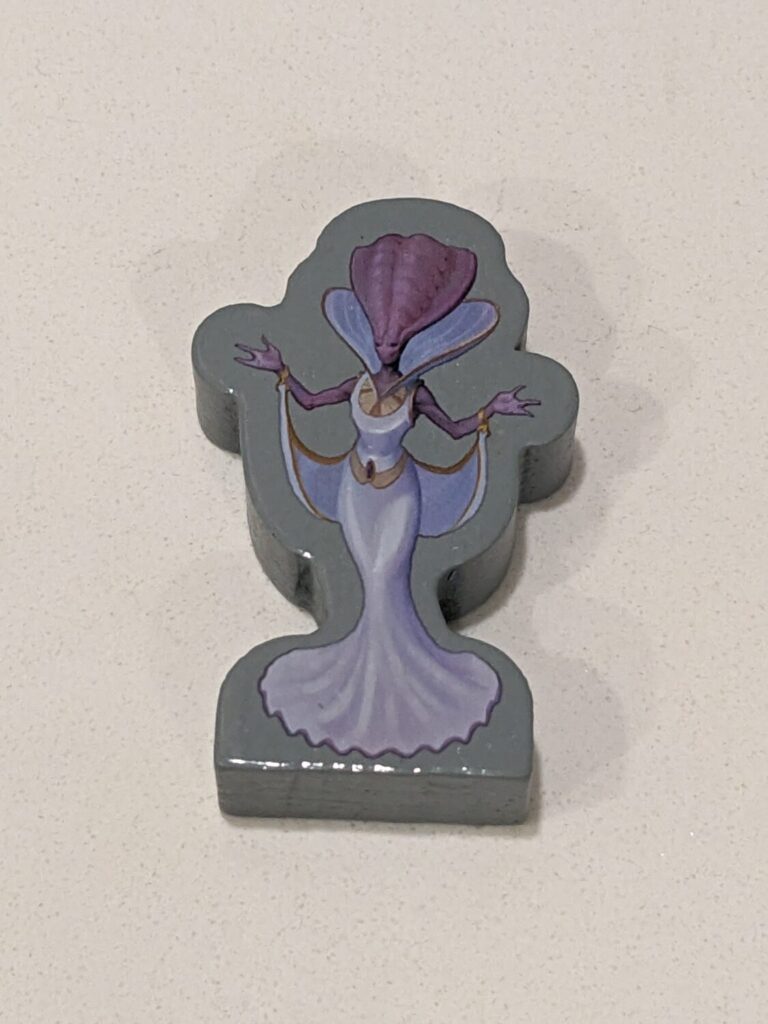
Let’s Talk About Space, Ba-beee
Not only are Funding tokens used by winners more often than Voting tokens, the Funding side of two of the starting tokens feature the ability to gather a resource for free. (One of the game’s tracks, 6Moon—aka “the blue planet”—features spaces that grant players temporary upgrades to their action tokens.) In some ways, I wish the game’s design forced players to use their four turns to vote twice and fund twice, but that’s not the case.
Where this snowballs is during the end-of-game scoring. Over the course of five plays, the Major Project funding for at least four, and usually all six, of the game’s tracks reach their destination. So, there’s not much drama there. In fact, the main drama comes because of the edge-case rule regarding funding a seventh “Joint Major Project”, where players begin to push that track up if a marker has reached its end space on other tracks. (There are other ways to push up the Joint Major Project marker as well, with action spaces in the Senate.)
Both between the data presented by BGA and my own experience, it is strictly better to play tokens as Funding tokens. That usually means all Major Projects will be completed. That means the right way to play Federation is to always attack the game the same way—push up all the tracks so that I can score in every area, so taking actions on all the planets is crucial. And that can be done somewhat easily thanks to the optional portion of a player’s turn, assuming they can gather enough spaceships to trigger bonus actions.
If everyone knows what they are doing, there may still be tension tied to the race for certain spots faster than others. Like most games, finding my footing is always tied to repetitions, so by my tenth play, I’m sure I will be much better at understanding the game state than I have across my first five plays.
Another issue is one that is a double-edged sword: the tracks. The most interesting track in Federation is the Atalum (“the purple planet”) track. Here, players will recruit tiles that offer one-time bonuses, ongoing powers, or actions that can be triggered later, during a visit to another planet’s track. But what makes Atalum great is that the tiles there are all different, and a player can only choose a tile that is currently at the top of its stack in a given column.
So, everyone wants to time their uses of Atalum to when they can get the perfect tile. I love that. I don’t love that I have to monitor that part of the board between turns, but that’s the deal if you want to be a mindful shopper. The downside is that the other tracks—particularly Neo and 6Moon, which are rote move-up-track, get-stuff spaces—are not thrilling, although I like that E81216 (“the green planet”) offers players a chance to race for some in-game scoring that is tied to a multiplier that gradually gets worse as other players visit.
My final issue is tied to player count…Federation is a four-player game, with a three- and two-player variant that uses blocking tiles to both take spaces away and seed votes on either half of the Senate. You want to play Federation at four players. Sure, that means 20 turns per player, which might turn this into a game that languishes at three hours or more. But at least you won’t have this issue, which surfaced in my first three-player game: at the start of a round, the first player has to block three spaces, randomly determined by a special tile. That means that the first player might not get the chance to block the specific space they want. In a game where boosting the tracks of the Major Projects you want to see funded is crucial, that isn’t always possible even by going first in a round with less than four players.
In two-player games, only one player can score the Major Project majorities; that might mean one player scores 50 points, while the other scores just 10 (assuming all six non-Joint projects are funded). This is not a problem unique to Federation; generally, I avoid area majority games with less than a full player count. But this is worth a callout here thanks to the whopping amount of points a player can gather in Federation.
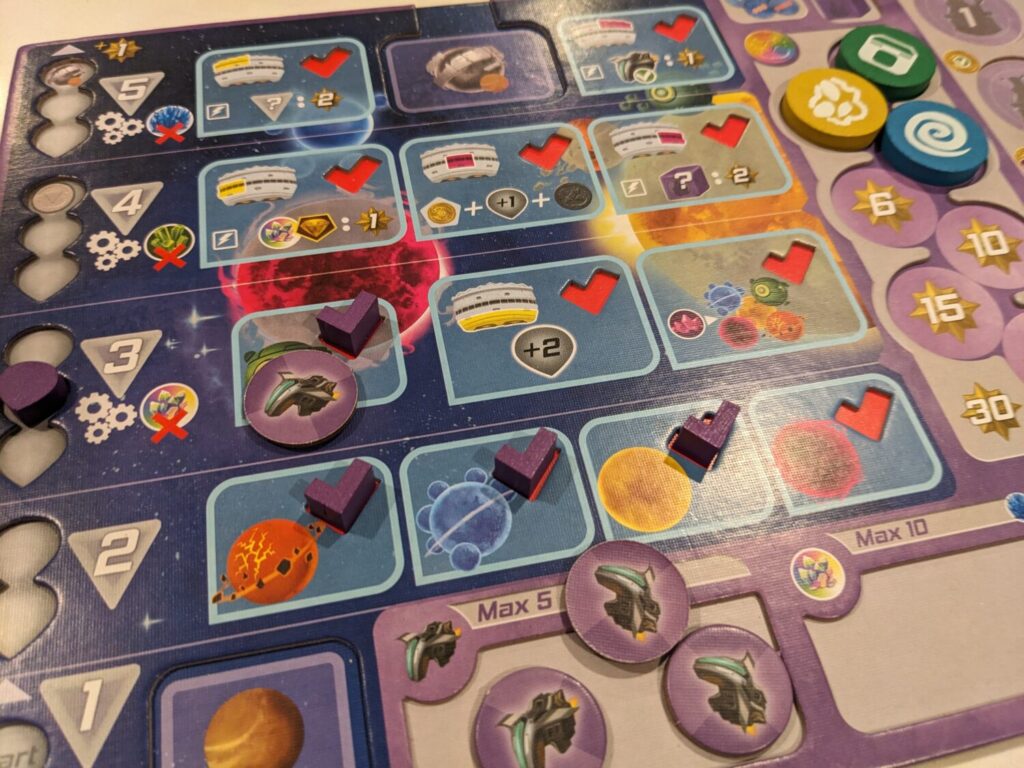
The Good Outweighs the Bad
I like Federation, mainly because I love the Senate board. For that reason alone, I’m excited to see what the upcoming expansion will do with the overall system, as long as it doesn’t disturb the great tension that comes from selecting spaces on the grid.
As a production, this is another example of why I always look forward to trying a new Eagle-Gryphon Games production. The rulebook is great, and does a fine job of illustrating various game examples when there might be something to decipher. It is easy to tell where other players are on various tracks, to see what I should spend my next turn racing to achieve. The game does a nice job of staying with the time block that is “I’m having fun and this game hasn’t overstayed its welcome.”
I was surprised that the base game did not come with a solo mode, but then again, I’m happy that mode wasn’t there if the designers felt like building the AI/automa would have taken more development work. The expansion has this mode, so it’s great to see that this will be an option, even if I think the game shines at the maximum player count. (What can I say? Lots of players prefer to only play their Euros solo, and now their wish has been granted!)
For some players in my network, I see why Federation has a BGG rank in the 700-800 range overall. It’s good, offers interesting choices, but isn’t quite an all-timer. That’s where I am as well. Give Federation a look, either through BGA or through retail, and decide for yourself!



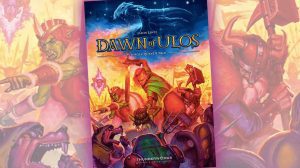

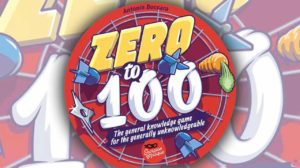
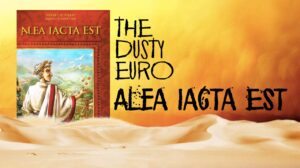


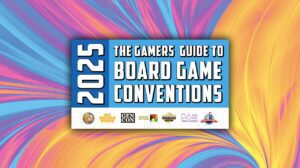
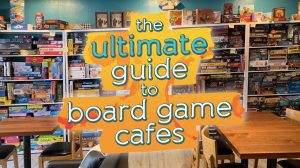
Add Comment